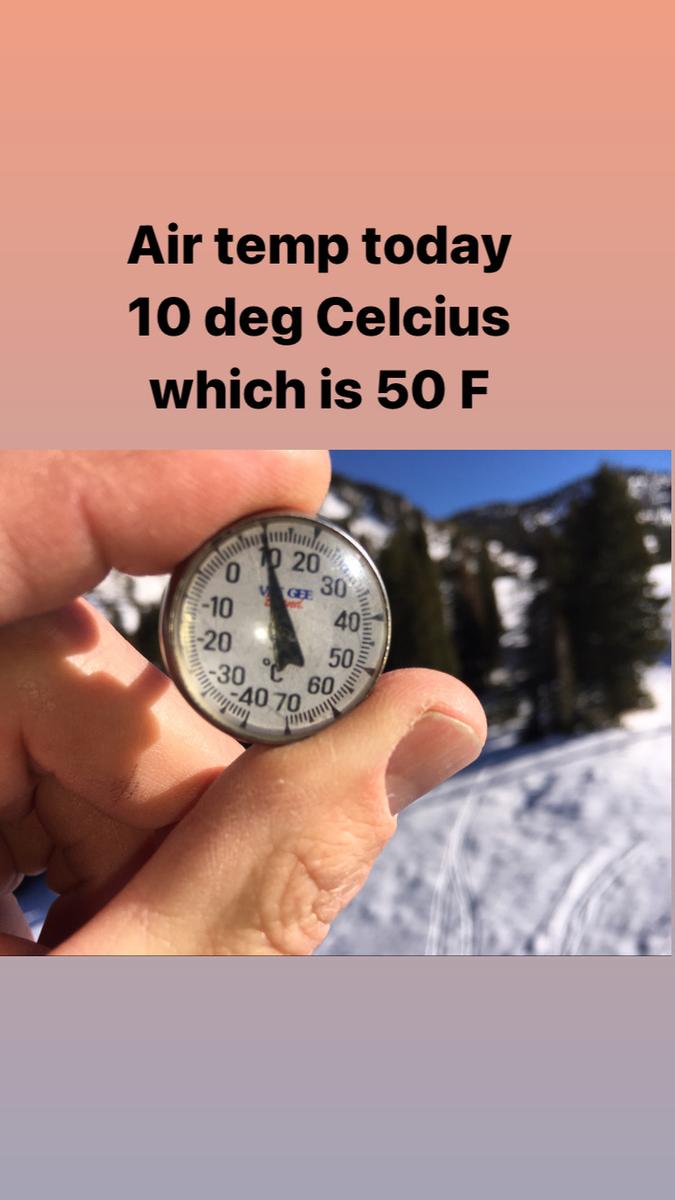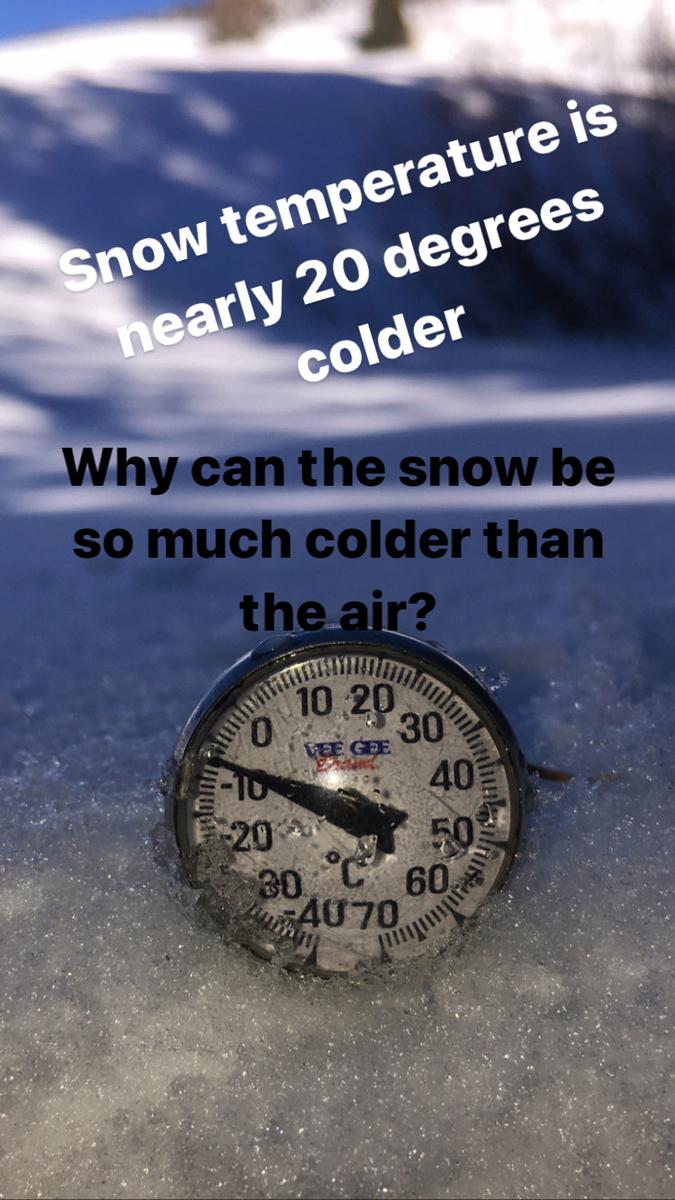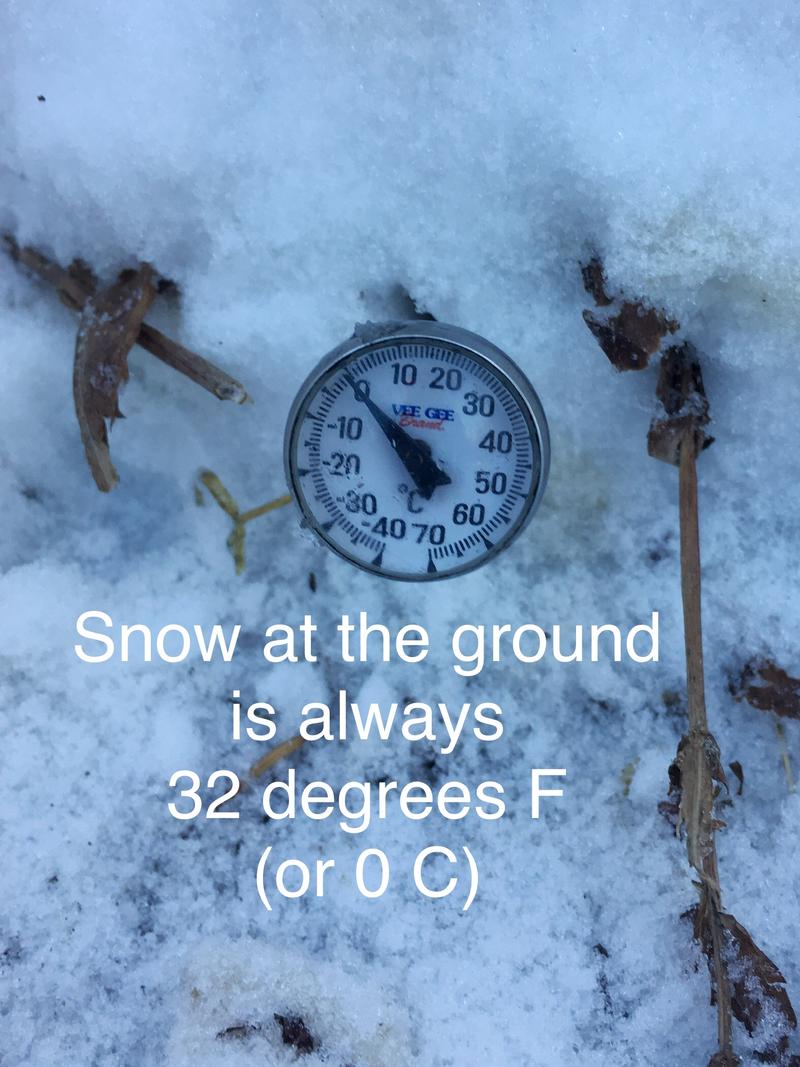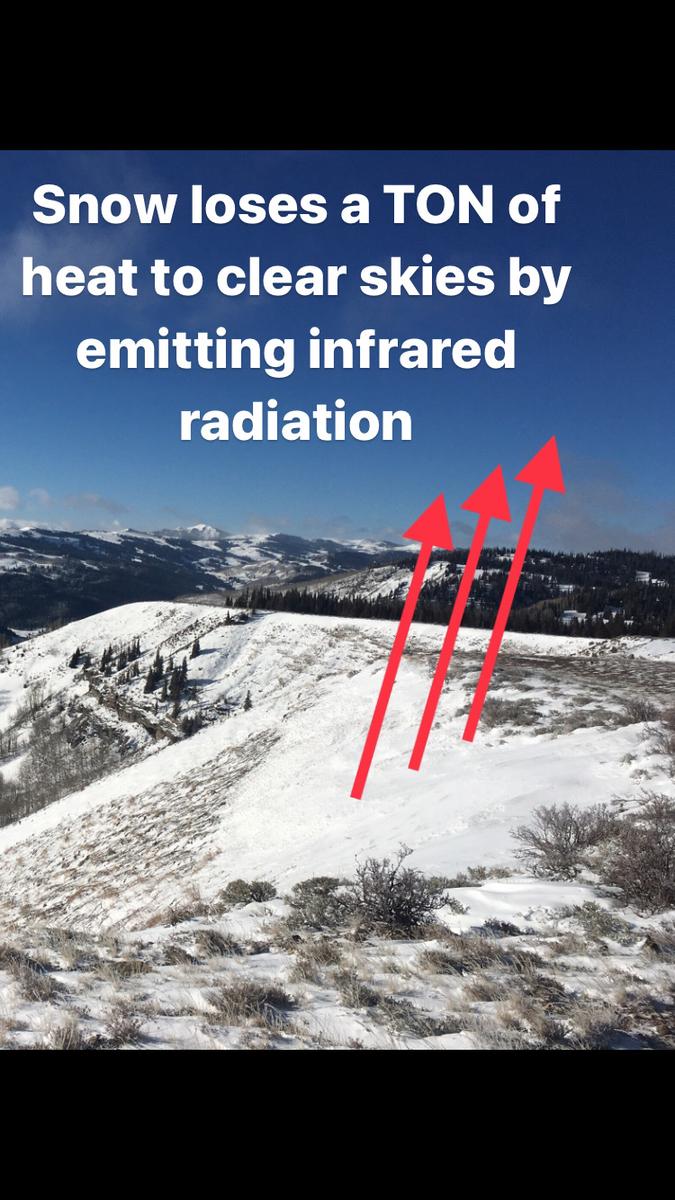
Mark Staples
2015-2024 - Director, Forest Service Utah Avalanche Center
Out with the kids on Saturday, December 6th, and they noticed the obvious. “You don’t need a shovel to dig in the snow”
Insightful words from a 7-year-old. What does it tell us when a kid notices how easy it is to dig in the snow with just your hands? Snow science can be kindergarten science.
The snow on many slopes has the consistency of sugar or loose sand. Why is this? It has metamorphosed or changed from snowflakes and old, rounded snow into weak, faceted snow.
Trent described why and how this process happens in this video:
As he mentions in the video, it is a big difference in temperature that drives this process.
- Snow temperature at the ground is always 32 degrees F.
- Snow surface temperature is usually much colder because it loses heat to clear skies.
- The snow temperature can be much colder than the air temperature.
- Snow loses heat by emitting longwave or infrared radiation (IR) to the clear skies. While snow can reflect over 90% of solar radiation, in the IR spectrum, snow is nearly a perfect "black body." As a black body, it can absorb or emit nearly 100% of the possible longwave radiation. This means warm (relatively warm) cloudy skies can really add heat to the snow. However, clear skies at night and during the day can really cause the snow to lose a lot of heat and become very cold. The snow emits longwave radiation to the clear sky and loses a lot of heat.




Looking ahead with storms on the horizon, it's easy to see how the avalanche danger will rise rapidly. Trent Meisenheimer spent some time demonstrating this in the video below and mapped some different elevations and aspects.






